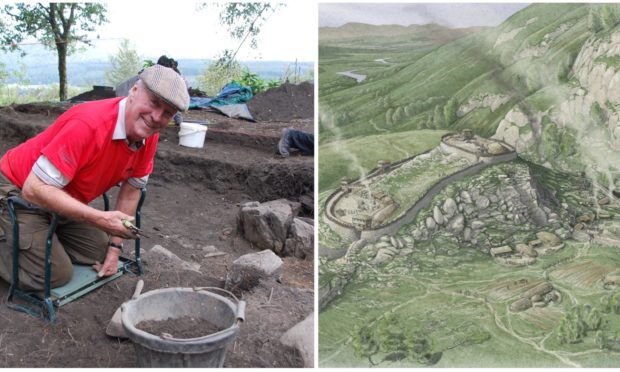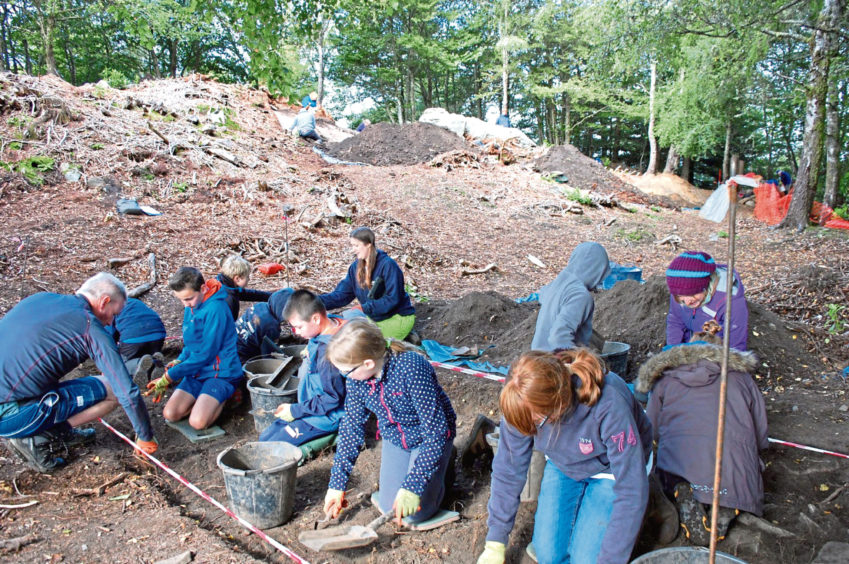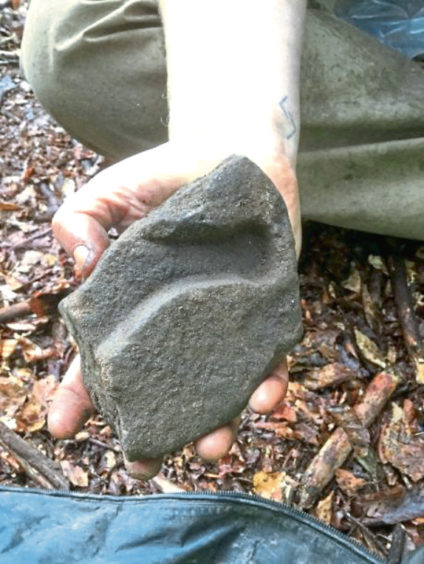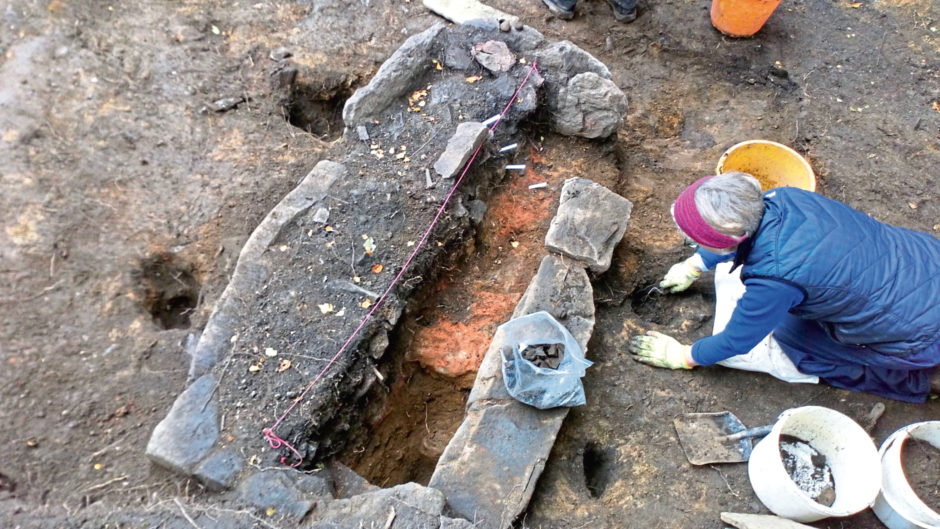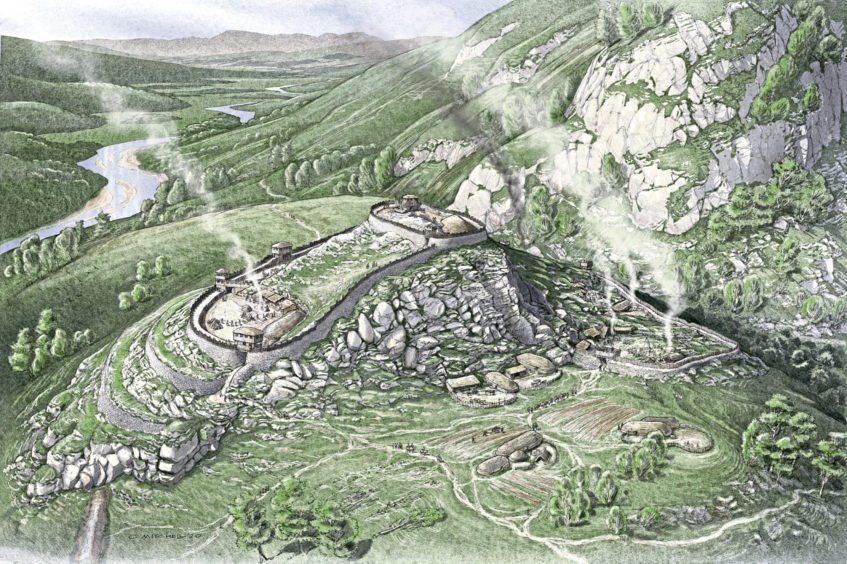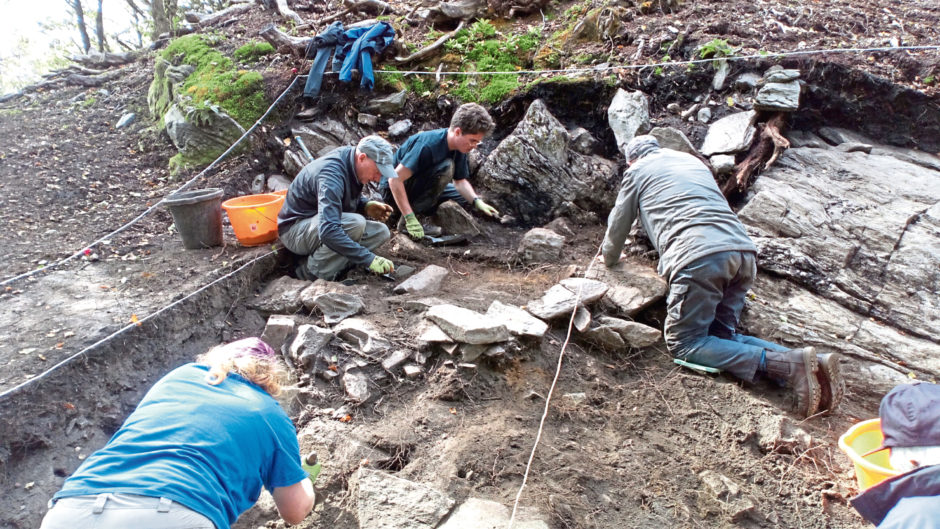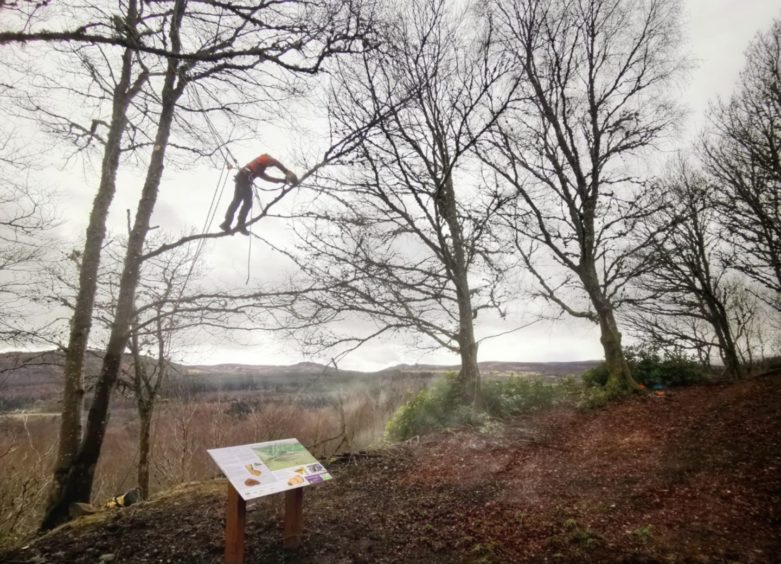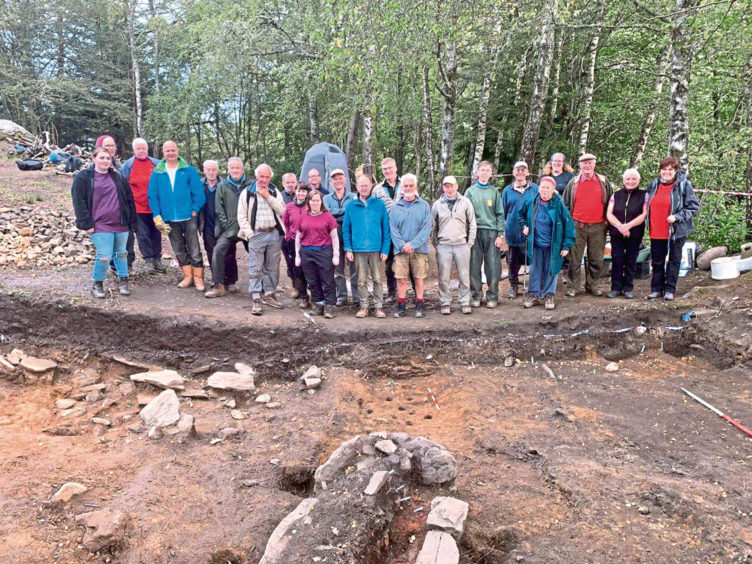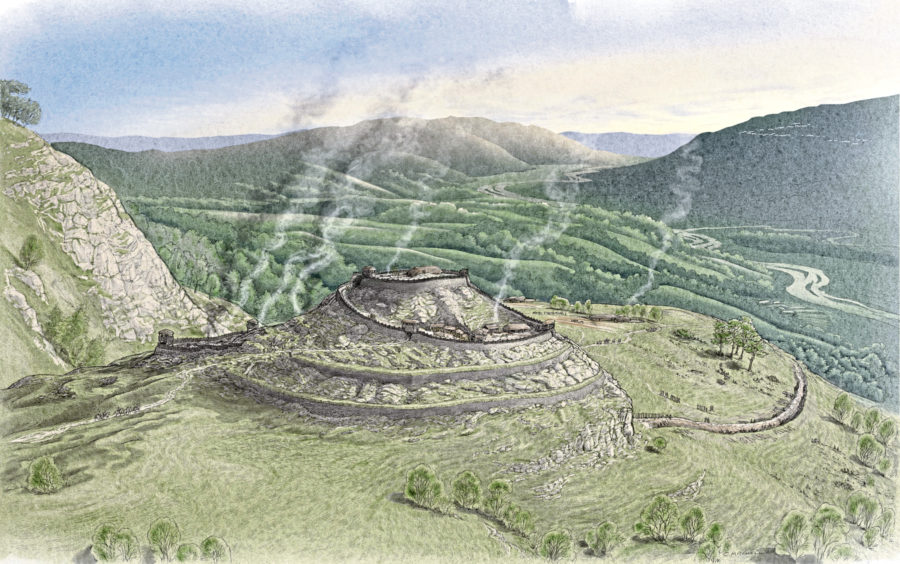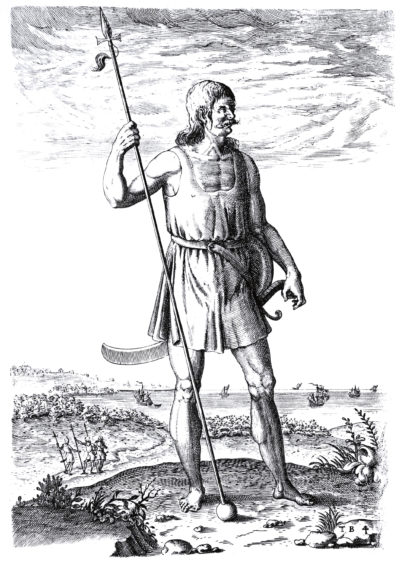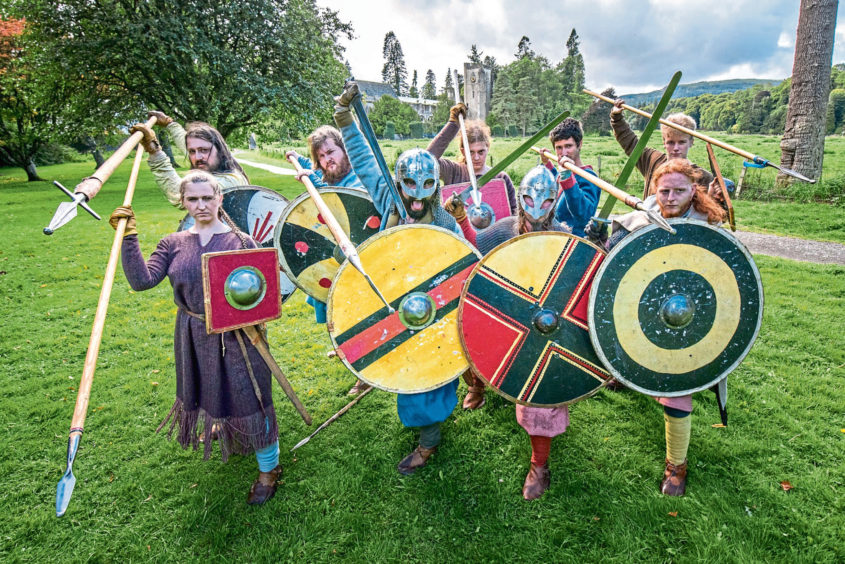The story behind a hillfort in Dunkeld which was once a royal Pictish ‘power centre’ is now being explored via a series of community projects, as Gayle Ritchie discovers.
Obscured by dense rhododendrons, King’s Seat hillfort was a site steeped in mystery and intrigue for many years.
Hidden deep within the grounds of Dunkeld House Hotel estate and boasting dominating views over Strath Tay, locals had known of its existence for a long time, but few understood its huge significance.
Questions about it remained unanswered until Dave MacDougall of Dunkeld and Birnam Historical Society began to investigate.
He contacted Perth and Kinross Heritage Trust (PKHT) in 2016 and organised a team of volunteers to cut back the rhododendrons – a massive task!
Together, the Trust and Society developed a project to explore the site through a programme of community archaeological excavation, and pledged to share the results with locals and visitors.
Following an extensive survey of the hillfort, experts discovered the site, on a major bend in the River Tay, was a ‘power centre’ of the seventh, eighth and ninth centuries.
Evidence of metal and textile production, as well as fragments of European pottery and Anglo-Saxon glass beads, suggest the fort had strong trade links across continental Europe.
Other finds included Roman glass that was recycled and reused as gaming pieces.
Archaeologists said the discovery was of great national significance, as it extends Scotland’s early medieval trade links and the distribution of luxury goods beyond previously understood limits.
They reckon the wealth of the finds suggests the fort was a stronghold of the elite in the local Pictish population.
“We uncovered lots of evidence of how people were living and working, and the remains of a building with a large hearth on the summit, with fragments of glass drinking vessels, gaming pieces, animal bone and horn,” says David Strachan, director of PKHT.
“The finds paint a vivid picture of high-status people gathering and feasting, decorated in the latest high-status jewellery and ornamentation.”
The excavations took place over three years, between 2017 and 2019.
The site had been inaccessible for years, having been completely overgrown with rhododendrons.
With the help of AOC Archaeology, volunteers joined professional archaeologists to survey and excavate the site in a “citizen science” project.
Each year, a team of 30 local volunteers were joined by UHI archaeology students and pupils from the Royal School of Dunkeld, Pitlochry High School, and Breadalbane Academy – all learning new skills in archaeological excavation in an outdoor classroom.
“The finds paint a vivid picture of high-status people gathering and feasting, decorated in the latest high-status jewellery and ornamentation.”
David Strachan
Using the results from the digs and reconstruction artwork showing how the hillfort might have looked, a series of interpretation panels, leaflets and school education packs have been created to share the site’s fascinating story with visitors, locals and future generations.
Reproductions of some of the original finds have also been created.
“Now is the time to reflect on the fantastic work that’s been done over the last few years,” says David.
“There were three years of excavations and the fourth year saw leaflets, digital school packs and interpretation panels being created.
“Ideally we would have had a big launch in the Dunkeld community, but it’s been tricky with the Covid situation. Instead, we’re having a kind of digital soft launch – celebrating the fact that we’ve concluded the project.”
There may be plans to go back and do some more excavations on the site, says David, but that will depend on funding.
Two interpretation panels exploring the history of King’s Seat and the story behind the excavations take pride of place on the hill – one at the top and one at the bottom.
The views at the summit have been improved too, thanks to SSE tree cutters.
The Community Archive in Dunkeld will also boast 3D laser printed replicas of some of the finds.
“The original finds will probably end up in Perth Museum so it’s nice to leave behind some kind of physical replica so people can understand a bit more,” says David.
“Finds such as ingot moulds – stones created so that molten metal could be poured into them to cast a pin or perhaps a brooch – have been printed digitally to the exact shape of the original artefact. And that’s quite exciting.”
Anyone on a mission to find the Pictish hillfort will need to be prepared to go on a bit of adventure, warns David.
“It can be pretty tricky to get to. It’s through the grounds of Dunkeld House Hotel and at the back of the hotel in dense woodland. It’s worth seeking out but it’s made clear it’s not the easiest or more obvious place to find! It’s more for those with an off-sheet sense of adventure who are interested in the hillfort to go out and discover.”
Meanwhile, artist Chris Mitchell has created a stunning reconstruction of King’s Seat.
“The detail is fantastic and it brings it to life for people,” says David. “I supplied Chris with the plans – there may have been about 20 drafts!
“His reconstruction is almost like a watercolour painting which is great. Otherwise, we end up with lots of graphs, words and so on ending up in a journal. But this approach brings the site to life for a wide range of people.”
The artefacts which were uncovered at King’s Seat are in keeping with other high-status, royal sites of early historic date in Scotland, including the early Dalriadic capital of Dunadd, in Argyll, and more locally at Dundurn near St Fillan’s by Loch Earn.
“The crucibles, whetstones, stone and clay moulds indicate craft production – making the site an important centre for production – not just the home of a small group of people making items for their own use,” explains Cathy MacIver of AOC Archaeology.
Gary McDonald, manager of Dunkeld House Hotel, says the King’s Seat project has revealed a moment in history of great importance to the local community and to Scotland as a whole.
“We are proud to have such a powerful symbol within our grounds and look forward to future endeavours to unfold more pages of history and stories about the estate,” Gary says.
The fort consists of a series of defensive earthworks constructed around a central ‘citadel’ enclosure. This is situated at the summit of the hill with a cascading series of ramparts below that enclose a flight of lower terraces.
Permission was granted by Historic Environment Scotland to excavate the site as it is protected as a nationally important Scheduled Monument.
It is illegal to metal detect on the site.
The King’s Seat project was funded by the National Lottery Heritage Fund, The Gannochy Trust, and SSE’s Griffin and Calliacher Community Fund.
David will present an online talk about the excavations for Culture Perth and Kinross on May 11.
- For more information, see pkht.org.uk/kings-seat
